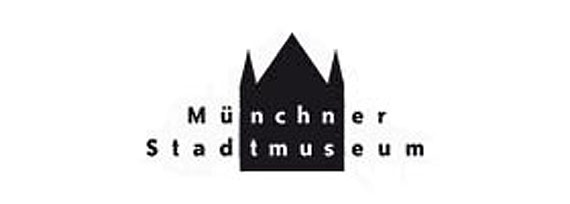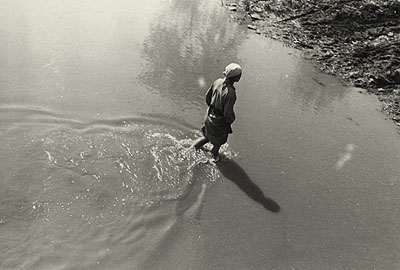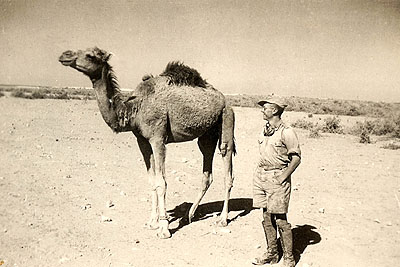
from the Arc de Triomphe, France 1940;
private collection Achim Gerloff, Wiesbaden
Strangers in Sight - Photo Albums from the Second World War
Fremde im Visier - Fotoalben aus dem zweiten Weltkrieg
Exhibition: 20 Nov 2009 – 28 Feb 2010
Münchner Stadtmuseum - Sammlung Fotografie
St.-Jakobs-Platz 1
80331 München

Münchner Stadtmuseum
St.-Jakobs-Platz 1
80331 München
+49 (0)89-23322370
stadtmuseum@muenchen.de
www.muenchner-stadtmuseum.de
closed until 2027

Strangers in Sight - Photo Albums from the Second World War November 20, 2009 - February 28, 2010 Following its successful presentation at the Oldenburger Stadtmuseum, the exhibition "Strangers in Sight - Photo Albums from the Second World War" will be on show for three months at the Münchner Stadtmuseum - Sammlung Fotografie. Some 150 privately owned photo albums - loans from former Northern German Wehrmacht soldiers and their families - as well as albums from museums and archives form the basis of the show. The photography collection of the Münchner Stadtmuseum is supplementing them substantially with a large number of soldiers' snapshots and albums from its own holdings. This exhibition is the result of a research project from Dr. Petra Bopp carried out at the Universities of Oldenburg (Prof. Dr. Detlef Hoffmann) and Jena (Prof. Dr. Norbert Frei). Seventy years after the outbreak of World War II, succeeding generations are more dedicated than ever to coming to terms with legacies and memories of that disastrous era. How should photo archives often kept hidden away for decades in cupboards and drawers be handled today? The exhibition "Strangers in Sight - Photo Albums from the Second World War" offers interpretations and perspectives for a better understanding of these photo archives. They show the inhabitants, landscapes and cultural monuments of the occupied countries as seen through the eyes of German soldiers. Yet the exhibition investigates not only the photographic motifs and related pictorial aesthetic, but also the influence of war propaganda on amateur photography. In 1939, some ten percent of all Germans possessed cameras of their own. Many soldiers willingly answered the call of the propaganda ministry to continue making use of their cameras even in action. Along with their letters, the soldiers' snapshots were intended to reinforce the bonds between the front and the homeland. Families carefully collected the pictures sent by their distant loved ones in their living rooms. The arrangements and captions are telling indications of how war memories were subjectively constructed: they show how the war was seen, not how it really was. Many collections are structured according to the historical course of events: the invasion of Poland in 1939, the "Blitzkrieg" on the western front in 1940 and the war of extermination in the east from 1941 onward. The retreat from 1943 to 1945 was photographed significantly less often, and only a few photos from English POW camps in North Africa as well as from POW camps in the Soviet Union have come down to us. In the early phase, the soldiers photographed camaraderie and everyday military life in the casern and proudly presented their first uniforms in professional atelier portraits. In the occupied countries and on the front, they pointed their cameras not only at destruction carried out by the Wehrmacht, but also at the fleeing civilian population and prisoners of war. While many photos are reminiscent of tourists' snapshots, the perspective taken on the foreign lands and people was also influenced by racist National Socialist propaganda imagery. The pictures taken by the soldiers at the front are not necessarily more authentic, but they do show a more highly differentiated view than those of the photojournalists in the service of the propaganda units whose photos dominated the official image of the war. The soldiers avidly exchanged snapshots, and the albums accordingly reflect various perceptions of the war. In scenes that appear harmless at first glance, uncertainty and fear, even the violence and destruction wrought by military action become apparent on closer inspection. The individuality of the war stories and personal fates often reveals itself on the final pages of the albums. Death, injury or imprisonment put an abrupt end to the stream of pictures; pages are left empty. The group portrait with the family symbolizes the return home; the albums continue into the 1950s with photos taken at veterans' gatherings. The show will present original albums, black-and-white reproductions, and slide and movie projections. It will examine the intimacy of the photos in the individual experiential sphere of the album. Interviews with three protagonists will shed light on the photographers' intentions. The specific sense of aesthetics reflected in the pictures by these hobby photographers of war will be addressed with a view to the context in which the pictures were taken. The show will present a private pictorial history of World War II. Curators: Dr. Petra Bopp, Sandra Starke Two publications have appeared in conjunction with the exhibition: - Petra Bopp, Fremde im Visier. Fotoalben aus dem Zweiten Weltkrieg, Kerber Verlag, Bielefeld 2009; German, 160 pages with numerous illustrations; 29.80 EUR - Petra Bopp, Sandra Starke, Fremde im Visier - Fotoalben aus dem Zweiten Weltkrieg, brochure on the exhibition, Kerber Verlag, Bielefeld 2009; German, 72 pages with numerous illustrations; 5.00 EUR

